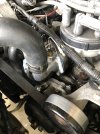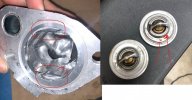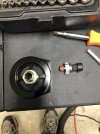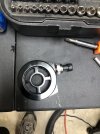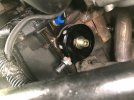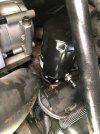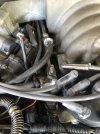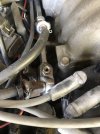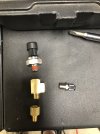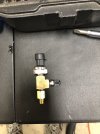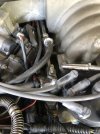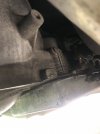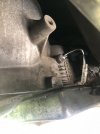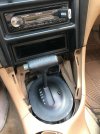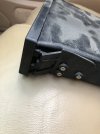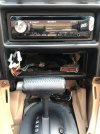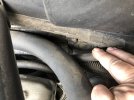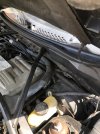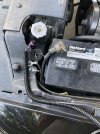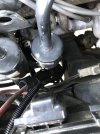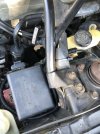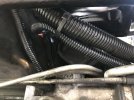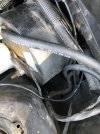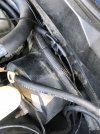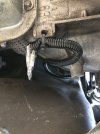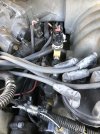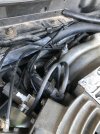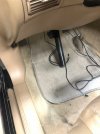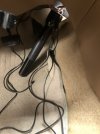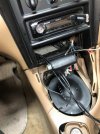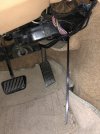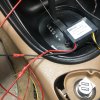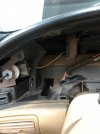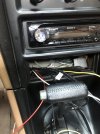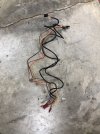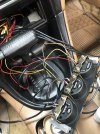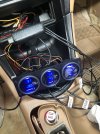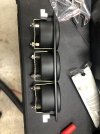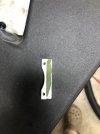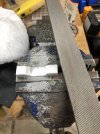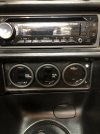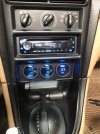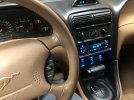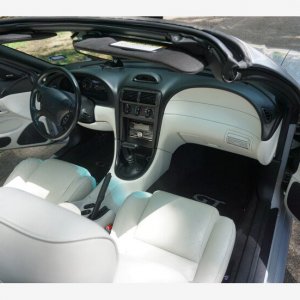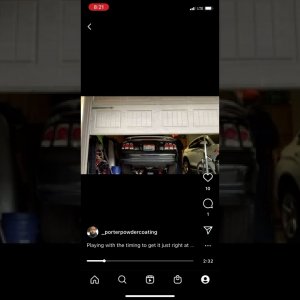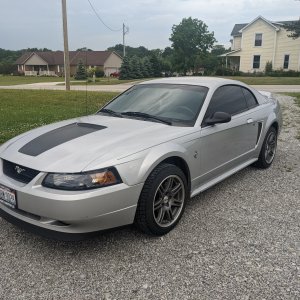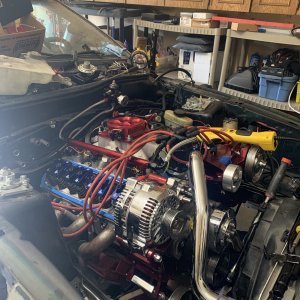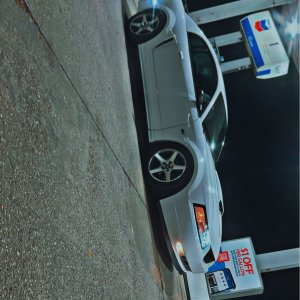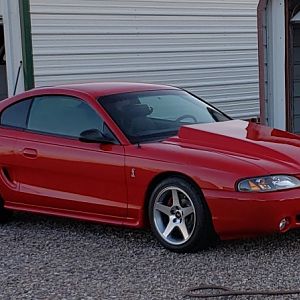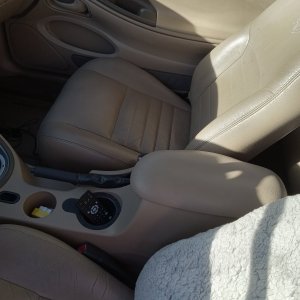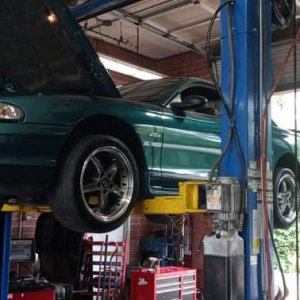maillemaker
Active Member
- Joined
- Mar 5, 2023
- Messages
- 419
- Reaction score
- 218
This thread will document my installation of Glowshift gauges into my 1995 Mustang GT.
I will be installing GlowShift Dual Temperature, Dual Pressure, and Volts meters. They will be installed in the center console under the radio, where the factory CD holder bin was located.
Parts:
1/8 - 1/16 NPT Adapter
FasParts 3/8" NPT Male NPT MIP MPT x 1/8" NPT Female FIP FPT Reducer Bushing
Permatex 80016 Form-A-Gasket #2 Sealant, 3 oz. , Blue, Non-hardening
Anderson Metals - 06127-02 Brass Pipe Fitting, Barstock Street Tee, 1/8" Female Pipe x 1/8" Male Pipe x 1/8" Female Pipe
Earl's 1/8 Npt Male Schrader Valve
DC-DC Stabilizer
GlowShift 10 Color Digital Volt Voltmeter Gauge
GlowShift 10 Color Digital 300 F Dual Temperature Gauge Kit
GlowShift 10 Color Digital 100 PSI Dual Pressure Gauge Kit
GlowShift Oil Filter Sandwich Plate Thread Adapter
1979-1995 Mustang Thermostat Housing - 5.0/5.8
1994-00 Mustang SVE Radio Bezel - 3 Gauge Panel 2 1/16"
20pcs 2A Standard Car Fuses - 2 AMP Automotive Fuses(ATO/APR/ATS)
Recoil FT1-10 10 Pack 12V Car Add-a-Circuit Fuse Tap Adapter ATO ATC Blade Fuse Holder
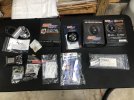
Step 1 - Engine Coolant Sensor Install
The factory thermostat housing actually has a cast-in depression for where a threaded sensor could be put, if it had been drilled and tapped. Unfortunately, on my GT, it had not been.
Instead, I ordered a new thermostat housing from LMR that has a 3/8 NPT threaded port in it.
If I had this to do over again, I would have preferred to drill and tap the Ford housing, because the LMR housing does not accept the correct thermostat - it does not fit properly. However, the pressed-in tube for the heater bypass hose was quite corroded on my OE housing, so I would have had to refurbish or replace it anyway. More on this later.
First step is to remove the existing housing. Loosen the hose clamps for the radiator hose and each end of the formed heater hose. Then loosen and remove the two thermostat housing bolts. Beware that they are different lengths. The short one goes on the driver's side.
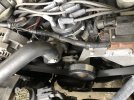
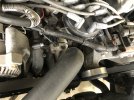
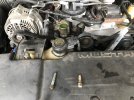
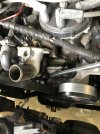
Next, I got the new housing ready for use. I used a hex wrench to remove the 3/8" NPT plug from the housing. Then I installed the 3/8 - 1/8 NPT Bushing to accept the Glowshift thermal sensor. I put these parts together using the non-hardening Permatex.
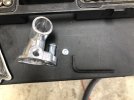
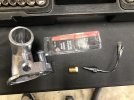
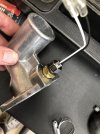
Next, I cleaned up the gasket surface with a scraper and some 3M scrubby material.
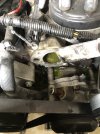
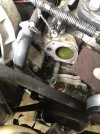
I will be installing GlowShift Dual Temperature, Dual Pressure, and Volts meters. They will be installed in the center console under the radio, where the factory CD holder bin was located.
Parts:
1/8 - 1/16 NPT Adapter
FasParts 3/8" NPT Male NPT MIP MPT x 1/8" NPT Female FIP FPT Reducer Bushing
Permatex 80016 Form-A-Gasket #2 Sealant, 3 oz. , Blue, Non-hardening
Anderson Metals - 06127-02 Brass Pipe Fitting, Barstock Street Tee, 1/8" Female Pipe x 1/8" Male Pipe x 1/8" Female Pipe
Earl's 1/8 Npt Male Schrader Valve
DC-DC Stabilizer
GlowShift 10 Color Digital Volt Voltmeter Gauge
GlowShift 10 Color Digital 300 F Dual Temperature Gauge Kit
GlowShift 10 Color Digital 100 PSI Dual Pressure Gauge Kit
GlowShift Oil Filter Sandwich Plate Thread Adapter
1979-1995 Mustang Thermostat Housing - 5.0/5.8
1994-00 Mustang SVE Radio Bezel - 3 Gauge Panel 2 1/16"
20pcs 2A Standard Car Fuses - 2 AMP Automotive Fuses(ATO/APR/ATS)
Recoil FT1-10 10 Pack 12V Car Add-a-Circuit Fuse Tap Adapter ATO ATC Blade Fuse Holder

Step 1 - Engine Coolant Sensor Install
The factory thermostat housing actually has a cast-in depression for where a threaded sensor could be put, if it had been drilled and tapped. Unfortunately, on my GT, it had not been.
Instead, I ordered a new thermostat housing from LMR that has a 3/8 NPT threaded port in it.
If I had this to do over again, I would have preferred to drill and tap the Ford housing, because the LMR housing does not accept the correct thermostat - it does not fit properly. However, the pressed-in tube for the heater bypass hose was quite corroded on my OE housing, so I would have had to refurbish or replace it anyway. More on this later.
First step is to remove the existing housing. Loosen the hose clamps for the radiator hose and each end of the formed heater hose. Then loosen and remove the two thermostat housing bolts. Beware that they are different lengths. The short one goes on the driver's side.




Next, I got the new housing ready for use. I used a hex wrench to remove the 3/8" NPT plug from the housing. Then I installed the 3/8 - 1/8 NPT Bushing to accept the Glowshift thermal sensor. I put these parts together using the non-hardening Permatex.



Next, I cleaned up the gasket surface with a scraper and some 3M scrubby material.


Last edited:

